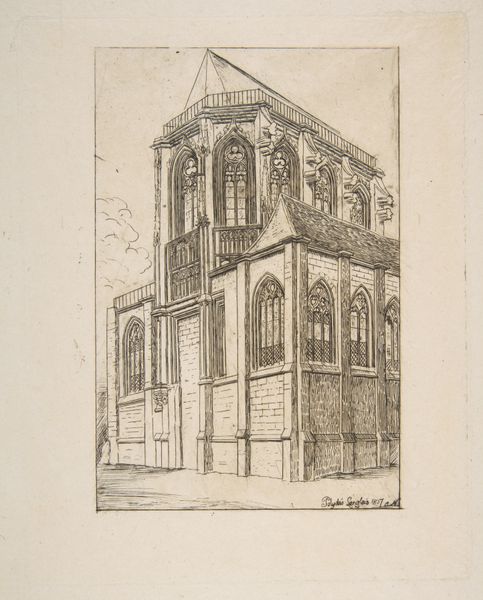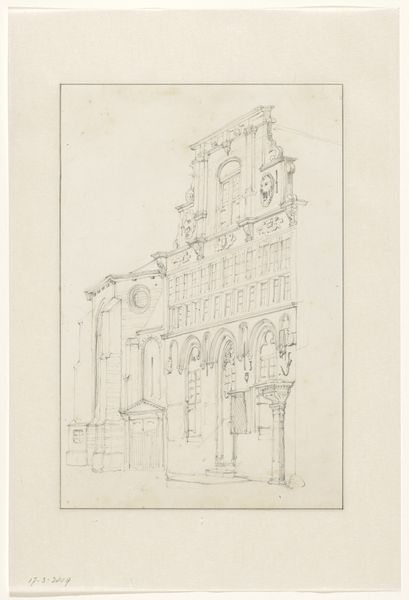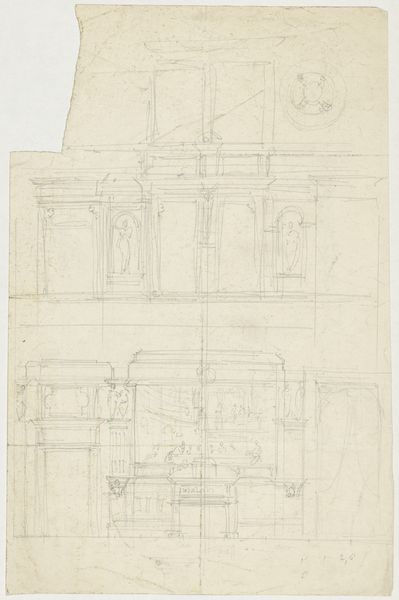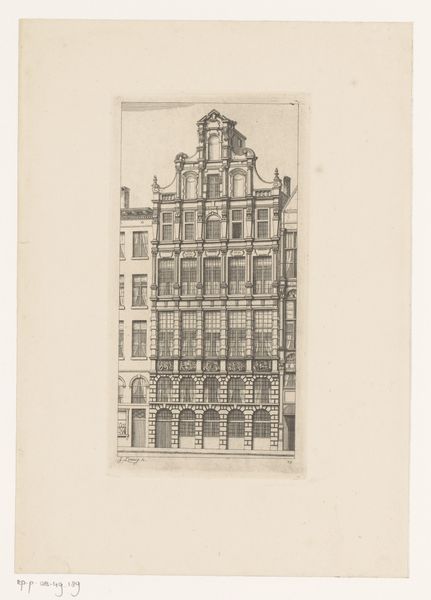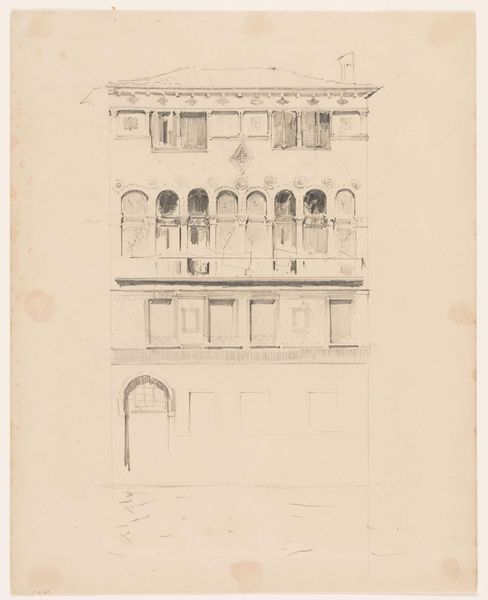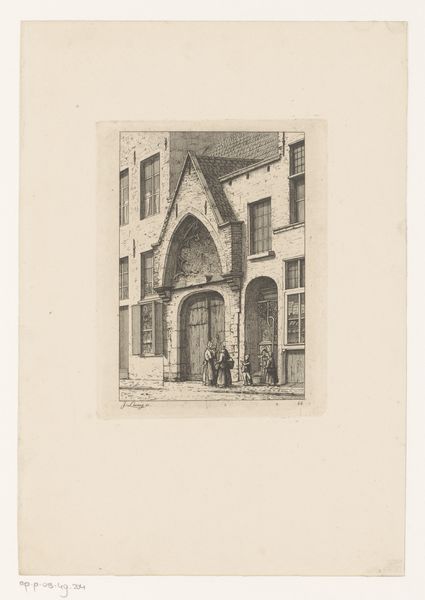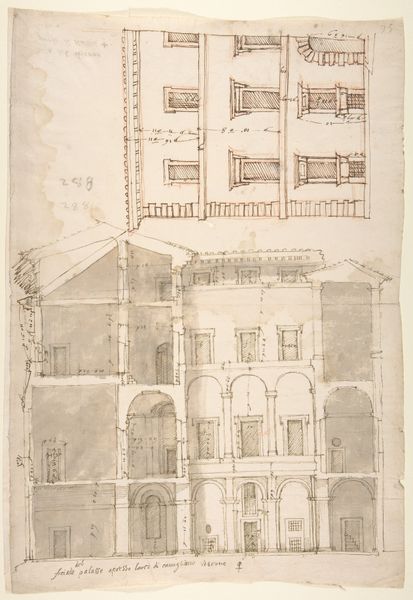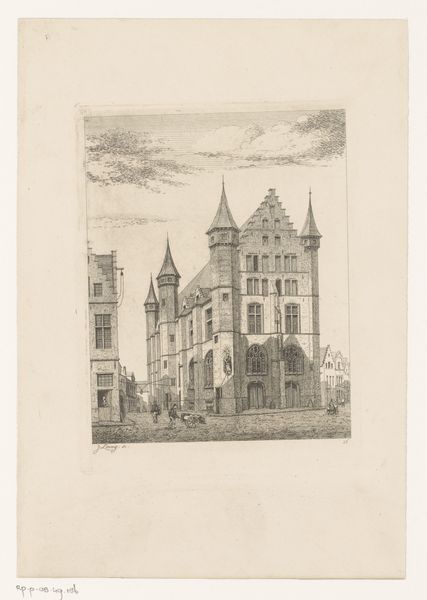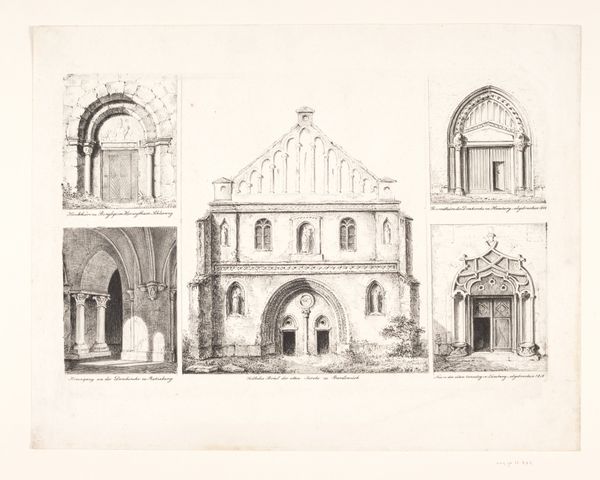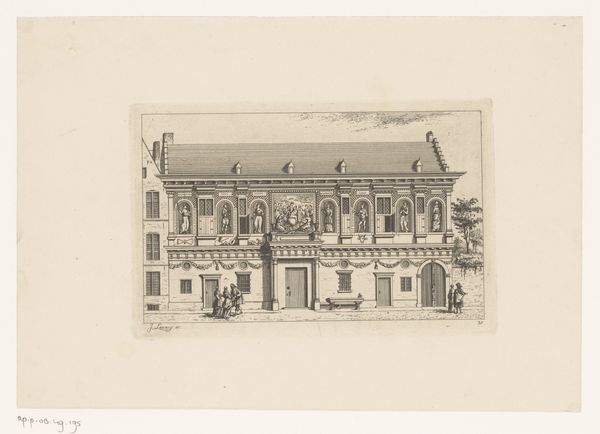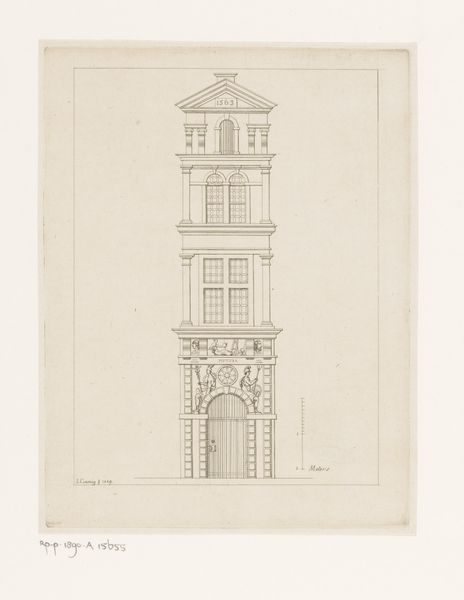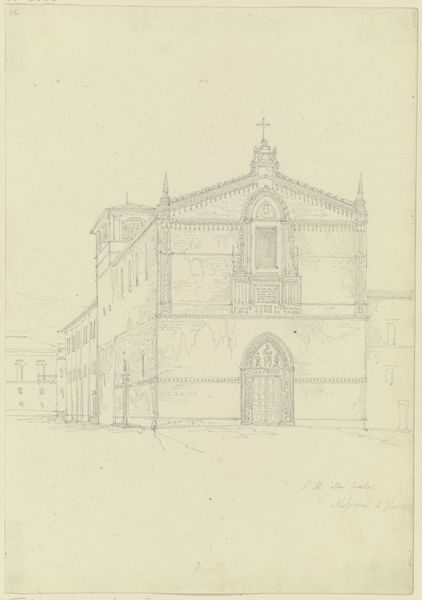
The Apse of the Church of St Martin-sur-Renelle, Paris 1860
0:00
0:00
Dimensions: 153 × 109 mm (image); 187 × 148 mm (plate); 229 × 159 mm (sheet)
Copyright: Public Domain
Curator: Meryon's 1860 etching, "The Apse of the Church of St Martin-sur-Renelle, Paris" offers an exquisitely detailed rendering of Parisian architecture. It's part of the collection here at the Art Institute of Chicago. Editor: The print is delicate, almost ethereal. The fine lines of the etching create an image that feels both precise and dreamlike, don’t you think? I find it calming yet somehow melancholic. Curator: Absolutely. It's crucial to understand that Meryon produced these prints during a period of rapid urbanization in Paris. His architectural prints became a powerful form of documentation of spaces threatened by Haussmann's transformations. He focused intently on areas that held symbolic value or were undergoing social upheaval. Editor: The image does seem like a memento of something that might disappear. Churches, of course, have powerful symbolism and emotional associations—security, faith, community. I wonder about the personal associations of the architectural details and their connection to cultural memory at the time. Were these structures important for the sense of place for those living nearby? Curator: It's not unreasonable to think so. This area may have been seen as part of "old" Paris, set to vanish amid rising economic tides and new boulevards. Consider, too, Meryon's personal struggles with mental health. He identified deeply with a vanishing Paris—with feelings of loss. Editor: The artist's emotional state really permeates the work. I look at the precise, intricate lines, and I see that delicacy reflected in the state of culture and perhaps even his personal reality, suspended in a time of monumental changes. It serves as both a record and perhaps even an elegy for a changing city. Curator: A keen insight! This intersection between historical transformation and individual psychological experiences shapes how we understand and view the print. Editor: Ultimately, Meryon used these very specific symbols, the church architecture, to reflect a sense of continuity despite urban transformation. We get a glimpse of cultural identity through it. Curator: An identity constantly being reformed by outside forces, I would argue. It prompts questions about urban planning's impact on communal life. Editor: An important reminder that images carry far more weight than their surface suggests.
Comments
No comments
Be the first to comment and join the conversation on the ultimate creative platform.
